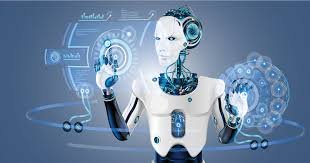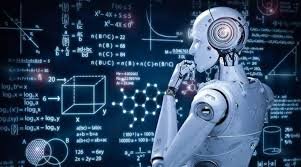Ever wonder how robots and automated systems are transforming our world? Whether it’s a friendly robot vacuum scooting around your living room or complex machinery assembling cars in factories, robotics and automation are here to stay. They’re not just buzzwords thrown around in tech circles; they’re revolutionizing the way we live, work, and even play. So, let’s dive into what robotics and automation really are, and more importantly, how they work!
What is Robotics?
Defining Robotics
Robotics is all about creating machines that can perform tasks autonomously or semi-autonomously. These machines, or robots, can be designed to carry out a variety of functions, from simple repetitive tasks to highly complex operations. Think of them as our mechanical helpers, stepping in where precision, endurance, and efficiency are needed.
Components of a Robot
A typical robot comprises several key components:
- Sensors: These act like a robot’s eyes and ears, collecting data from the environment.
- Actuators: These are the muscles, responsible for movement and action.
- Controllers: Think of this as the brain, processing information and making decisions.
- Power Supply: This is the heart, providing energy to the entire system.
Types of Robots
Robots come in all shapes and sizes. Here are a few common types:
- Industrial Robots: Used in manufacturing to perform tasks like welding, painting, and assembly.
- Service Robots: These include vacuum robots, lawn mowers, and even robotic assistants in healthcare.
- Humanoid Robots: Designed to look and move like humans, often used in research and entertainment.
- Autonomous Vehicles: Self-driving cars and drones fall under this category.
What is Automation?
Understanding Automation
Automation is the technology that allows processes to be performed without human intervention. It’s the driving force behind many of the conveniences we enjoy today, from automatic coffee makers to sophisticated production lines in factories.
Levels of Automation
Automation can be divided into different levels:
- Fixed Automation: Highly specialized and inflexible systems, like assembly lines.
- Programmable Automation: Systems that can be reprogrammed to perform different tasks, like CNC machines.
- Flexible Automation: Highly adaptable systems that can switch tasks with minimal reconfiguration, often seen in advanced manufacturing.
Benefits of Automation
Why do we love automation? Let’s count the ways:
- Efficiency: Machines don’t tire or need breaks, increasing productivity.
- Precision: Automation ensures consistent quality with minimal errors.
- Cost Savings: Reduced labor costs and improved operational efficiency.
- Safety: Machines can handle dangerous tasks, reducing workplace injuries.
How Robotics & Automation Work Together
Synergy of Robotics and Automation
When robotics and automation join forces, magic happens. Robots become the hardware, while automation provides the software. Together, they create systems that can operate independently, enhancing efficiency and performance across various industries.
Real-World Applications
Here are some cool ways robotics and automation are changing the game:
- Manufacturing: Robots assemble, weld, and paint cars with pinpoint accuracy.
- Healthcare: Automated systems assist in surgeries, manage patient data, and even dispense medication.
- Logistics: Autonomous robots sort packages in warehouses and deliver goods to customers.
- Agriculture: Drones monitor crop health, and automated tractors plow fields, optimizing yield.


Behind the Scenes: How It All Works
The Role of Artificial Intelligence
Artificial Intelligence (AI) is the secret sauce that makes modern robotics and automation so powerful. AI algorithms enable robots to learn from their environment, make decisions, and improve over time. Machine learning, a subset of AI, allows systems to analyze data and predict outcomes, making automation smarter and more efficient.
Sensors and Data Collection
Sensors are crucial in robotics and automation. They gather data about the environment, such as temperature, distance, and movement. This information is then processed to make informed decisions. For example, a robotic vacuum uses sensors to navigate around furniture and clean your home without bumping into walls.
Actuators and Motion Control
Actuators are responsible for movement. They convert electrical signals into mechanical motion, allowing robots to move their limbs, wheels, or other parts. Precise motion control is essential for tasks that require high accuracy, like assembling tiny electronic components.
Networking and Communication
Modern robots and automated systems often communicate with each other and with central control units. This networking capability allows for coordination and collaboration, enhancing overall system performance. For example, in a smart factory, different robots can work together seamlessly to assemble products.
FAQs: All Your Burning Questions Answered
What’s the difference between robotics and automation?
Robotics involves the creation of robots that can perform tasks, while automation refers to using technology to automate processes. Robotics can be a part of automation, but not all automation involves robots.
How do robots learn new tasks?
Robots learn new tasks through programming, and in advanced cases, through machine learning. They can be taught by demonstration or by analyzing large amounts of data to identify patterns and make decisions.
Are robots going to take all our jobs?
While robots will replace some jobs, they will also create new opportunities. Automation can handle repetitive and dangerous tasks, allowing humans to focus on more creative and complex work.
How safe are robots and automated systems?
Safety is a top priority in robotics and automation. Advanced systems are designed with multiple safety features to prevent accidents. Regulatory bodies also ensure that standards are met.
Can I have a robot in my home?
Absolutely! There are many consumer robots available, from robotic vacuums to smart home assistants. They’re becoming increasingly affordable and user-friendly.
Conclusion
The world of robotics and automation is nothing short of amazing. From making our daily lives easier to revolutionizing entire industries, these technologies are reshaping the future. Understanding what robotics and automation are and how they work helps us appreciate the incredible advancements happening around us.
So next time you see a robot or use an automated service, you’ll know a bit more about the magic behind the scenes. Here’s to the future—one that’s smarter, more efficient, and filled with endless possibilities thanks to robotics and automation!


